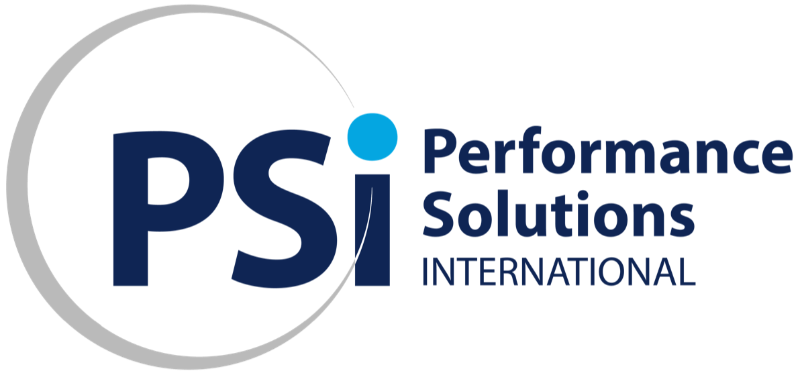(It’s missing a key piece!)
When we polled HR leaders, 40% said their biggest challenge is retaining quality talent. Ironically, 67% of employees surveyed in an independent study cited lack of engagement, including an unclear development path, as their reason for leaving a job.
But that doesn’t surprise L&D professionals. L&D understands that providing employees with quality training opportunities drives engagement. However, educating employees about training isn’t always easy. Over 66% of L&D professionals reported finding it extremely difficult to promote their training initiatives effectively.
There’s an obvious answer: companies must consistently promote their learning opportunities.
You Need Buy-in and Awareness
A lot of time, talent, and budget are spent carefully considering the right approach, choosing vendors, producing materials and implementing the training. However, you have to put an equal amount of focus into gaining and maintaining your ‘sponsors’ and ’employees’ awareness of your training initiatives.
A marketing plan for your training should focus on strategies to:
- Promote awareness
- Educate employees and sponsors on the successes and importance the training
Obtain buy-in
For training to be successful, you need buy-in and support from all levels of your organization. Promoting the available learning opportunities across leadership sponsors and influencers will increase engagement and build an understanding of your offerings.
Leverage Senior Leadership
The initiative will get a lot of employee attention if they see it’s important for senior business leaders. Create collateral for senior leaders to use to introduce and discuss the benefits of the training, such as:
- A series of emails to promote the training to the learner audience:
- Ask a senior business leader to record a 30-second video discussing the key benefits, supported by a link to your curriculum directory.
- Ask a senior leader to provide a personal quote about the importance of the training and pair it with a learner testimonial and a link to the assets.
- An email to learners’ direct managers informing them of the approach and encouraging them to promote the training with suggested messaging (sample emails)and other best practices to increase engagement.
Engage Managers
Engaging and involving managers to reinforce senior leadership messages about the importance of the training is critical. Approaches can include:
- Drafting a 15-30 second script and ask managers to personalize it and then leave a voice mail for their direct reports suggesting they complete the training
- Creating a series of emails managers can use to promote the curriculum to the learner audience. Ask managers to:
- Send a link to a success story about a learner that completed the program and improved their performance.
- Provide a personal quote about the importance of the training that they can add to the curriculum summary, including a learner testimonial and a link to the assets.
Influence the Influencers
Employees often will look to the high performers or influencers in your organization for cues on what is essential to succeed. Ask these key members of your organization to support and reinforce the senior leadership messaging by:
- Sending an email with a personal quote about how they use the training to meet goals. Give them a draft with a summary of the training and a link to the assets.
- Participating in an interview with other influencers to discuss the importance and impact of the training. This interview can be recorded as a video, podcast, or written into a blog you can share with learners.
- Sharing a personal success story resulting from their improved skills or knowledge after completing the training in an email with a link. (This success story can be the basis for the blogs mentioned above.)
Build and Maintain Awareness
In addition to the initiatives above, you should also build and maintain awareness of your training opportunities. It is crucial to continue to promote year-round or until it is no longer available. Ideas for this include:
- Highlighting the learning and links to the assets on your intranet.
- Creating web banners and short ads for your intranet.
- Cross-selling the training by discussing them at staff meetings, industry meetings, other training events, etc.
- Hosting a virtual training or in-person training “open house.”
- Creating spotlight ads for the LMS.
- Hanging posters in common spaces or creating digital signage for hub TVs to promote the training.
Create Incentives
You can also create incentive programs for learners to encourage engagement. This can include:
- Enrolling employees in a lottery if they complete the training(s) by a specific date. Selected employees could earn:
- Gift cards
- Company apparel or accessories
- Lunch with senior leaders
- Etc.
- Leveraging and promoting badging by highlighting learners who have earned a badge, sending recognition emails from senior management, promoting badges on LinkedIn, etc.
Consistently Communicate!
To ensure that the initiatives stay in front of employees, space the marketing initiatives out over time. Think of it like a “marketing snack,” which is how people like to consume information. Once a week, send a short email with a fact or other information tied to the training instead of sending one huge email or a flurry of emails the first week a new initiative is launched.
And Now a Word About Your Sponsors
To increase the visibility of the training successes and justify budget expenditures, you should keep training sponsors informed on the successes and importance of industry training. These people might include the line of business sponsors, such as:
- Decision-makers
- Champions
- Decision influencers
Highlight Successes and Communicate Consistently
As with an employee awareness campaign, it’s essential to communicate regularly with the sponsors. To do that, space out the marketing messages over time, perhaps monthly or quarterly. You can leverage many of the emails and other collateral you create for employees to share the success of the training with sponsors.
Use email to share:
- Updates as the training roll-out progresses and final results once it is complete.
- Testimonials and personal success stories resulting from learners’ improved knowledge after completing the training.
- Highlights of any marketing initiatives and the collateral created to support the marketing efforts.
- Important or unique aspects of the training, i.e., how it supports other training assets, key content covered, etc.
- Monthly, quarterly and annual data on the impact of the training:
- Number of new enrollees during the period
- Number of new completions during the period
- Number of new badges (if applicable) issued during the period
Summary
Building employee engagement is a challenge for most companies. Still, a LinkedIn study found companies that were good at developing and promoting talent retained employees almost twice as long as other companies and had higher levels of engagement. Ensuring employees know what training initiatives are available is key to driving engagement. Try implementing a few ideas discussed here to see if you can impact employee engagement.
About the Author
Jill Gualtieri, is the Chief Learning Officer and a partner at Performance Solutions International (PSI). She has been providing training and consulting services for the last 25 years and loves helping clients achieve their learning goals.
Performance Solutions International (PSI)
PSI is the leading provider of industry-focused training, custom learning solutions and learning consulting services to empower your professionals with the knowledge, skills and tools they need to succeed in today’s highly competitive environment.

